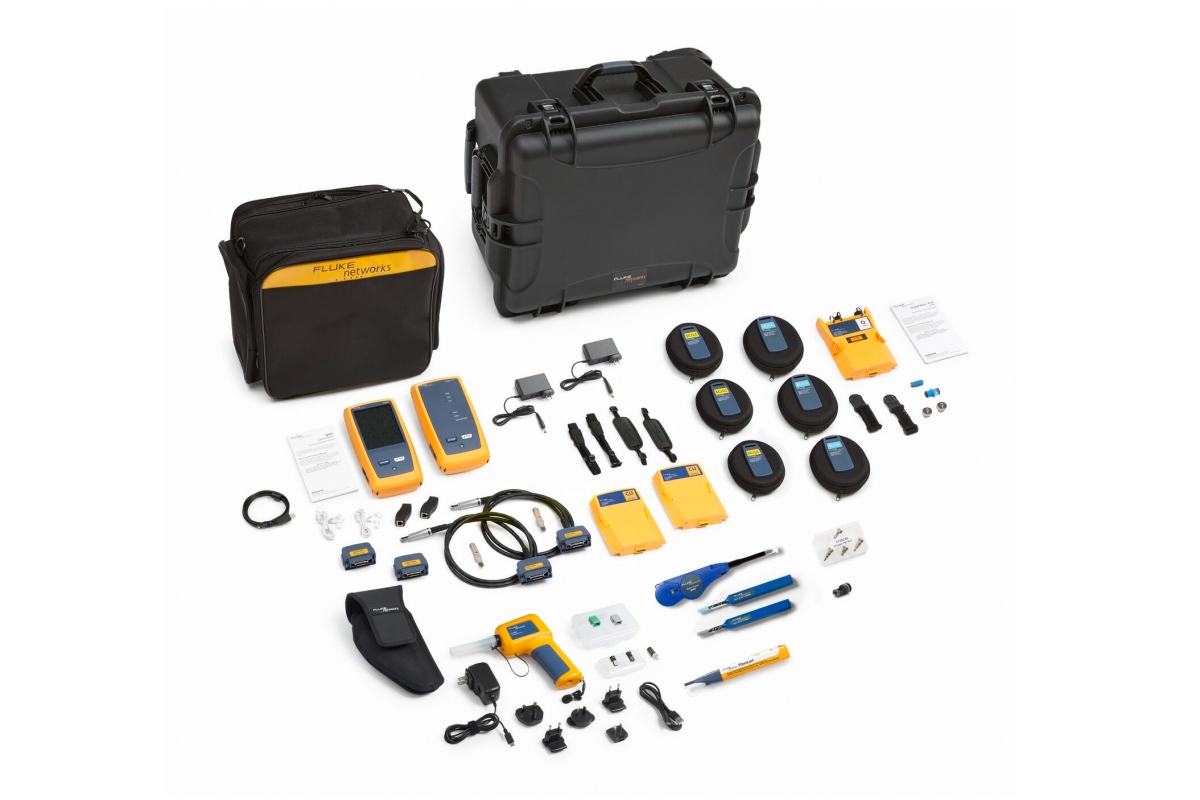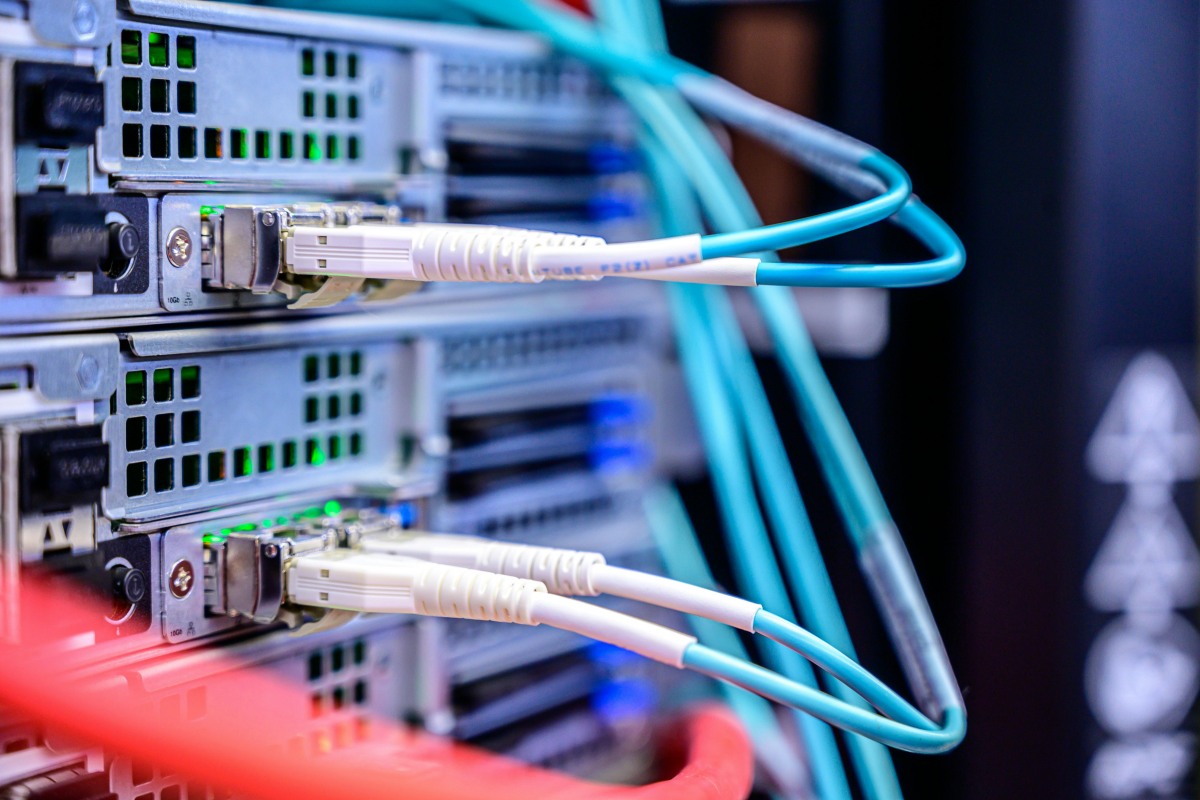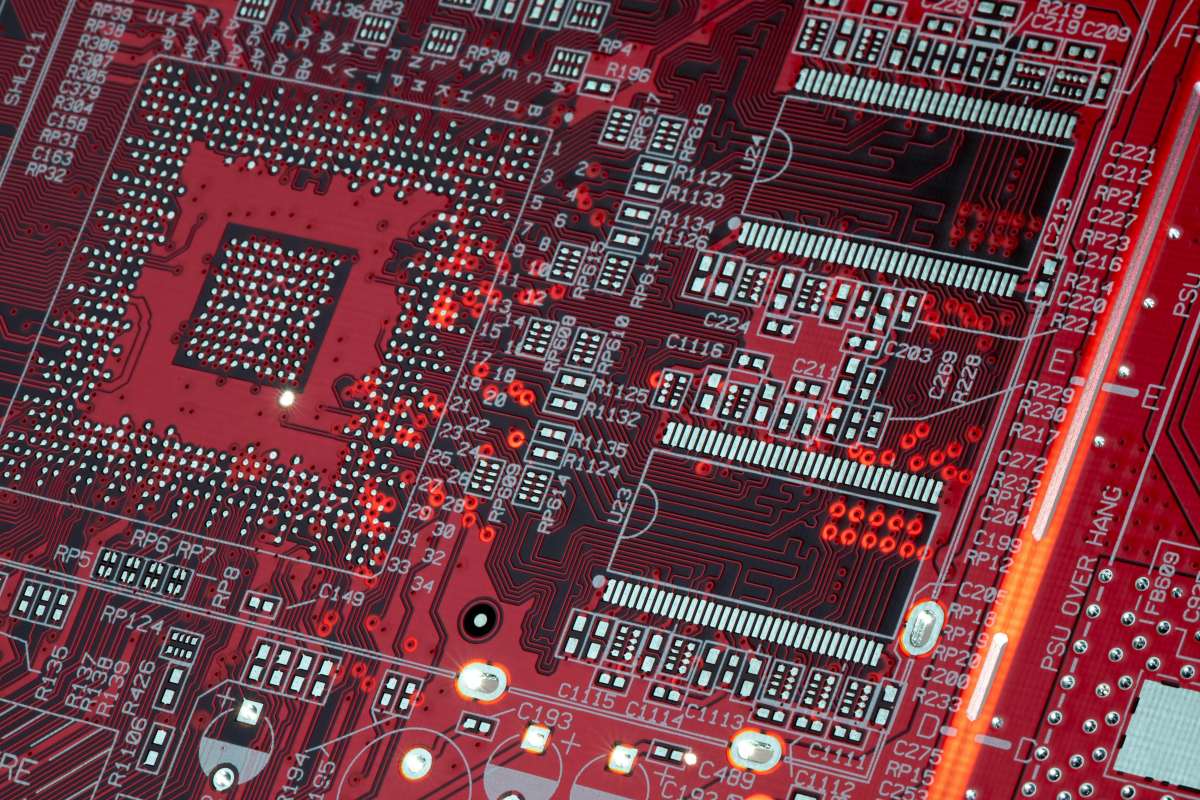Enterprise Network Infrastructure: Design, Performance & Security
Data Centre Infrastructure News & Trends
Enterprise Network Infrastructure: Design, Performance & Security
Products
ProLabs expands 100G DCO transceiver range to 80km
ProLabs, a provider of optical connectivity and networking equipment, has launched an expanded QSFP28 100G digital coherent optics (DCO) transceiver family capable of extending network reach to 80 kilometres - up to twice the distance of typical transceivers.
The development comes as the UK, the world’s third-largest data centre market, faces increasing demand from AI and other emerging technologies.
By using ProLabs’ 100G DCO transceivers, the company says operators can connect data centres over longer distances without the need for repeaters, reducing infrastructure costs and freeing up resources for other areas of the network.
Reducing equipment and energy demand
According to ProLabs, the new range reduces reliance on intermediate points of presence (PoPs) and reconfigurable optical add-drop multiplexers (ROADMs), cutting the amount of equipment required.
Sam Walker, Vice President of Sales EMEAI at ProLabs, comments, “We are delighted to have launched our expanded range of DCO transceivers complementing our existing 400G ZR+ ahead of Connected Britain.
"Our transceivers will enable operators to improve their networks, reducing the number of active elements within the optical path. Not only does this reduce avoidable overheads, but it also helps address the growing demand for high-capacity, low-latency connectivity.”
The range is available in two variants: a standard power version for -10 dBm requirements and a high-transmit version for specific applications.
Options include ITEMP, ITEMP AutoTune, and CTEMP AutoTune, with a CMIS version due to be launched shortly. These features allow operators to automatically select the required wavelength once installed, aiming to support faster and more flexible integration.
Sam continues, “Another issue facing operators is power consumption. AI data centres require far more processing power than traditional facilities, and energy is costly.
"However, less network infrastructure means less power is required, so the use of our 100G DCO transceivers means operators can free up essential resources that may have been tied to power consumption.”
The ProLabs family of 100G DCO transceivers will be available for the first time at Connected Britain in London (24-25 September) at Stand 258.
For more from ProLabs, click here.
Joe Peck - 23 September 2025
Data Centre Business News and Industry Trends
Data Centre Infrastructure News & Trends
Enterprise Network Infrastructure: Design, Performance & Security
Insights into Data Centre Investment & Market Growth
Ciena to acquire Nubis Communications in $270m deal
Ciena, an American networking systems and software company, has announced an agreement to acquire Nubis Communications, a privately held company based in New Providence, New Jersey, USA, in an all-cash transaction valued at $270 million (£199 million).
Nubis specialises in high-performance, low-power optical and electrical interconnects designed to support artificial intelligence (AI) workloads. The acquisition is hoped to strengthen Ciena’s data centre strategy by adding new technologies and expanding its engineering expertise.
Expanding data centre interconnect capabilities
Nubis’ technology is focused on increasing scale and density inside the data centre to handle growing AI traffic. Its portfolio includes:
• Co-Packaged Optics (CPO) and Near Packaged Optics (NPO) — high-density optical modules capable of 6.4 Tb/s full-duplex bandwidth, optimised for low-latency, low-power operation. Combined with Ciena’s SerDes, these engines enable advanced interconnects for rack-to-rack and in-rack connectivity.
• Electrical Active Copper Cables (ACC) — analogue electronics that extend copper connectivity up to 4 metres at 200 Gb/s per lane, offering a low-power, low-latency alternative to traditional copper or DSP-based approaches.
In addition, more than 50 Nubis engineers will join Ciena’s research and development team, strengthening its technical capabilities inside the data centre.
David Rothenstein, Chief Strategy Officer at Ciena, says, “The acquisition of Nubis represents a significant step forward in Ciena’s strategy to address the rapidly growing demand for scalable, high-performance connectivity inside the data centre, driven by the explosive growth of AI-related traffic.
"With ownership of these key technologies for a wider range of use cases inside the data centre, we are expanding our competitive advantage by advancing development of differentiated solutions, reducing development costs, and driving long-term efficiency and profitability.”
Dan Harding, CEO of Nubis, adds, “The Nubis team is thrilled to join Ciena and enhance its portfolio with our interconnect technologies. Together, we will advance Ciena's data centre strategy by delivering reliable and high-performance solutions to support the next generation of AI workloads.”
Transaction details
The acquisition has been approved by the boards of both companies and Nubis shareholders. It includes customary purchase price adjustments for cash, debt, and working capital, along with employee retention arrangements.
The deal is expected to close during Ciena’s fiscal fourth quarter of 2025, subject to standard closing conditions.
For more from Ciena, click here.
Joe Peck - 23 September 2025
Data Centre Infrastructure News & Trends
Enterprise Network Infrastructure: Design, Performance & Security
Events
News
FTTH Congress CEE 2025 to focus on fibre rollout
The FTTH Congress CEE 2025 will take place on 7–8 October at the DoubleTree by Hilton in Warsaw, Poland, bringing together policymakers, operators, investors, and technology providers to address fibre deployment challenges and opportunities across Central and Eastern Europe (CEE).
The two-day event, organised by the FTTH Council Europe, is expected to draw more than 400 delegates from across the region’s broadband ecosystem.
Fibre challenges and opportunities in CEE
According to the latest FTTH/B Market Panorama, the CEE region still has more than 13 million homes without fibre access, with rural areas presenting the largest gaps.
While markets such as Poland and Romania have seen rapid deployment, others - including Czechia and parts of the Baltics - continue to face regulatory and investment obstacles.
Vincent Garnier, Director General of the FTTH Council Europe, says, “Central and Eastern Europe represents both one of the continent’s biggest fibre challenges and one of its greatest opportunities.
"With millions of homes still unconnected, this Congress is about ensuring that ambition translates into action by bringing together the actors who can make fibre a reality across the region.”
Programme highlights
The programme includes keynote sessions, technical presentations, and national market debates, with participation from the European Commission, BEREC, national regulators, operators, infrastructure investors, and vendors.
Key themes will cover:
• Regulatory frameworks and funding to accelerate deployment• Investment models and cross-border partnerships• Innovations in network resilience and open access models• The role of fibre in smart cities, inclusive growth, and digital sovereignty
Country-focused sessions will provide insight into fibre developments in Poland, Czechia, Romania, Ukraine, and the Baltics.
Francesco Nonno, President of the FTTH Council Europe, adds, “This event is a unique chance to address the strategic dimension of fibre. Beyond infrastructure, it is about enabling digital competitiveness, sustainability, and resilience.
"The Congress in Warsaw will highlight how national and European priorities can come together to deliver for citizens and businesses alike.”
Joe Peck - 15 September 2025
Data Centre Infrastructure News & Trends
Enterprise Network Infrastructure: Design, Performance & Security
Products
Fluke launches DC kits to reduce fibre failures
Fluke Networks, a manufacturer of network certification and troubleshooting tools, has introduced a set of Versiv Data Center Kits designed to help technicians and engineers prevent copper and fibre connectivity issues, as well as troubleshoot them more efficiently.
The launch comes as global demand for data centre capacity continues to rise, driven by artificial intelligence (AI), cloud computing, and hyperscale facilities. With increasing density in fibre connections, contamination and testing challenges are becoming more significant risks to uptime.
Kits for fibre inspection and troubleshooting
The new kits include:
• Fibre and Copper Commissioning and Troubleshooting Kit – for verifying and optimising networks throughout a data centre’s lifecycle, from commissioning to upgrades and troubleshooting
• Fibre Inspection Kit – aimed at reducing failures by addressing end-face contamination, a leading cause of fibre performance issues
• MPO Maintenance and Troubleshooting Kit – designed to speed up multi-fibre trunk testing by up to 80% with single-button operation
Alongside the kits, Fluke is also releasing accessories that support Very Small Form Factor (VSFF) connectors, which enable higher connection density.
These accessories allow users of the CertiFiber Pro Optical Loss Test Set to apply the recommended single-jumper reference method for testing MDC connections, as well as inspect and clean MMC, MDC, and SN connectors.
Nigel Hedges, Application and Technical Specialist at Fluke Networks, says, “With over 9,000 data centres worldwide, and AI, cloud, and hyperscale technologies driving explosive growth, infrastructure teams are under unprecedented pressure.
"The new Versiv Data Center Kits are designed to help technicians and engineers meet that challenge head-on - equipping them with tools to prevent failures, speed up troubleshooting, and ensure high-density fibre connections are clean, tested, and reliable.”
Fluke Networks says the kits are intended to support teams working in hyperscale and enterprise environments, where the margin for error is minimal and preventative maintenance is essential to maintaining resilience.
Joe Peck - 10 September 2025
Artificial Intelligence in Data Centre Operations
Data Centre Infrastructure News & Trends
Data Centre Operations: Optimising Infrastructure for Performance and Reliability
Enterprise Network Infrastructure: Design, Performance & Security
Nokia, Supermicro partner for AI-optimised DC networking
Finnish telecommunications company Nokia has entered into a partnership with Supermicro, a provider of application-optimised IT systems, to deliver integrated networking platforms designed for AI, high-performance computing (HPC), and cloud workloads.
The collaboration combines Supermicro’s advanced switching hardware with Nokia’s data centre automation and network operating system for cloud providers, hyperscalers, enterprises, and communications service providers (CSPs).
Building networks for AI-era workloads
Data centres are under increasing pressure from the rising scale and intensity of AI and cloud applications. Meeting these requirements demands a shift in architecture that places networking at the core, with greater emphasis on performance, scalability, and automation.
The joint offering integrates Supermicro’s 800G Ethernet switching platforms with Nokia’s Service Router Linux (SR Linux) Network Operating System (NOS) and Event-Driven Automation (EDA). Together, these form an infrastructure platform that automates the entire network lifecycle - from initial design through deployment and ongoing operations.
According to the companies, customers will benefit from "a pre-validated solution that shortens deployment timelines, reduces operational costs, and improves network efficiency."
Industry perspectives
Cenly Chen, Chief Growth Officer, Senior Vice President, and Managing Director at Supermicro, says, "This collaboration gives our customers more choice and flexibility in how they build their infrastructure, with the confidence that Nokia’s SR Linux and EDA are tightly integrated with our systems.
"It strengthens our ability to deliver networked compute architectures for high-performance workloads, while simplifying orchestration and automation with a unified platform."
Vach Kompella, Senior Vice President and General Manager of the IP Networks Division at Nokia, adds, "Partnering with Supermicro further validates Nokia SR Linux and Event-Driven Automation as the right software foundation for today’s data centre and IP networks.
"It also gives us significantly greater reach into the enterprise market through Supermicro’s extensive channels and direct sales, aligning with our strategy to expand in cloud, HPC, and AI-driven infrastructure."
For more from Nokia, click here.
Joe Peck - 9 September 2025
Data Centre Infrastructure News & Trends
Enterprise Network Infrastructure: Design, Performance & Security
News
DE-CIX explores orbital interconnection with Space-IX
Internet exchange (IX) operator DE-CIX is extending its interconnection vision beyond Earth through its Space-IX initiative, which aims to connect satellite constellations and space-based assets with terrestrial digital ecosystems.
The company, which operates more than 60 internet exchanges worldwide and connects over 4,000 networks, is investigating what the first orbital IX could look like.
Ivo Ivanov, CEO of DE-CIX, says, "Wherever networks are created, interconnection should follow.
"We’ve spent 30 years building the backbone of the internet here on Earth. Now, we’re bringing that same neutral, high-performance interconnection model to the next layer of digital infrastructure, above the clouds and to the stars."
Research into satellite connectivity
DE-CIX is working with the German Aerospace Centre (DLR) on the European Space Agency’s OFELIAS project, which is researching how laser-based communications can improve satellite connectivity.
Optical links promise higher data rates than radio-based systems, but require advanced protocols to mitigate challenges such as atmospheric interference and cloud cover.
While OFELIAS focuses on data flow between satellites and ground stations, DE-CIX’s broader Space-IX initiative is investigating how to interconnect space-based infrastructure at scale, laying the foundations for an orbital internet exchange.
Bridging space and terrestrial ecosystems
"As satellites become part of the digital supply chain - whether delivering broadband to underserved communities, powering AI for businesses, or enabling orbital analytics - we need an architecture that unites space and Earth into one seamless ecosystem," Ivo continues.
"This collaboration is the very beginning of our answer to that challenge."
In August, DE-CIX India became the first Internet Exchange in the country to integrate Starlink into its ecosystem. Through Space-IX, DE-CIX is working with satellite operators to ensure orbital networks connect effectively with terrestrial infrastructure, particularly for latency-sensitive applications.
From global broadband and IoT to remote sensing and AI, the space economy is projected to reach $1.8 trillion (£1.3 trillion) by 2035. DE-CIX argues that orbital networks must interconnect intelligently with terrestrial networks, content providers, and cloud platforms to avoid developing in isolation.
For more from DE-CIX, click here.
Joe Peck - 9 September 2025
Data Centre Infrastructure News & Trends
Enterprise Network Infrastructure: Design, Performance & Security
News
Telehouse Thailand & NT to enhance ASEAN connectivity
Telehouse Thailand, a provider of data centre colocation services, has partnered with National Telecom (NT) to enhance international data transmission via submarine cable systems.
The collaboration aims to reinforce the country’s telecommunications backbone and support digital transformation across both public and private sectors.
The agreement links NT’s international submarine cable network directly to the Telehouse Bangkok data centre, which is now fully operational. This connection allows Telehouse Thailand to provide domestic content providers and internet service providers (ISPs) from neighbouring countries with access to the Asia Direct Cable (ADC) and Asia America Gateway (AAG) systems.
The ADC network connects China, Hong Kong, Japan, the Philippines, Singapore, Thailand, and Vietnam, while the AAG network extends from Asia to the United States. Together, these systems link key data centre locations hosting major cloud and content providers, and establish direct connections with global markets.
NT’s domestic submarine cable system offers alternative routing through Thailand’s Gulf coast to its international landing stations in Songkhla and Satun, supporting reliable connectivity across multiple regions.
Strengthening Thailand’s digital infrastructure
Alongside benefits for private companies and public organisations, the partnership supports the Thai government’s aim of positioning the country as an ASEAN Digital Hub, encouraging investment and enabling regional digital growth.
Colonel Sanpachai Huvanandana, President of NT, says, "This collaboration expands Thailand’s business potential and telecommunications readiness in the AI era.
"With terabit-scale capacity and high-reliability network design, our international connectivity infrastructure addresses the critical requirements of global cloud and content providers when considering investment in Thai data centre facilities."
Ken Miyashita, Managing Director of Telehouse Thailand, adds, "Leveraging NT’s submarine cable network, a core element of Thailand’s telecommunications infrastructure, enables our customers to efficiently handle the huge volumes of data traffic from Gen AI and cloud services, which are expected to significantly grow.
"As Bangkok’s leading carrier-neutral interconnection data centre, Telehouse further strengthens this submarine connectivity and high service availability with the four diverse incoming fibre routes."
For more from Telehouse, click here.
Joe Peck - 4 September 2025
Data Centre Infrastructure News & Trends
Enterprise Network Infrastructure: Design, Performance & Security
News
84% of businesses report rising network outages
Nearly nine in ten organisations have experienced an increase in network outages over the past two years, with more than a quarter reporting increases of 25% to 50%, according to new research from Opengear, a developer of remote infrastructure management systems and a Digi International company.
The rise in outages has reportedly cost more than a third of businesses between $1 million (£744,000) and $5 million (£3.7 million) in the past year alone. Over half of organisations also noted a 10-24% increase in outages over the two-year timeframe.
The survey, designed to identify critical pain points affecting data centre operations, polled over 1,000 CIOs, CSOs, and network engineers across the UK, US, France, Germany, and Australia. The survey highlights how network outages are causing significant disruptions across data centre operations, affecting everything from system availability to business continuity.
What the research shows
Network engineers identified the most common causes of these outages as device configuration changes (highlighted by 27%) and server hardware failures (referenced by 26%), both of which can severely impact the stability and performance of data centres.
To mitigate these risks, nearly a third of organisations (32%) rank AI and machine learning technologies among the technologies they have primarily invested in to support data centre operations. At the same time, 30% expect to increase spending on Out-of-Band (OOB) management solutions over the next five years to meet this same goal.
Patrick Quirk, President and General Manager, Opengear, says, “Outages are no longer isolated events; they are happening more often and the cost is hitting businesses hard. Complexity, ageing infrastructure, human error, and cyberattacks are all part of the problem.
"Governments are starting to take notice too, putting policies in place to protect critical digital infrastructure. As organisations lean more heavily on data centres to power digital transformation, the stakes are higher than ever. An outage is not just downtime; it is lost revenue, lost productivity, and lost trust.
“Forward-looking businesses are not standing still; they are rethinking their strategies to build resilience into every layer of their operations. One clear shift is towards decentralisation, pushing workloads closer to where data is generated and consumed. That move reduces risk from a single point of failure, but it also demands new approaches to management and security.”
As businesses adopt decentralised data processing models, 28% of organisations view the shift to edge computing and distributed networks as a trend that will significantly impact network management within their data centres over the next five years.
This move towards edge computing further reflects the broader trend of decentralisation in network architecture, which - while offering operational efficiencies - requires more sophisticated management systems to handle the increased complexity of data centre operations.
According to Patrick, “Edge computing brings clear advantages in speed, security, and efficiency, but it does not make the job easier. Distributed environments create more moving parts, and that means more opportunity for failure if they are not managed properly.
"The answer is a resilient foundation and secure remote management that keeps infrastructure reachable and under control, no matter where it is deployed.”
Joe Peck - 3 September 2025
Artificial Intelligence in Data Centre Operations
Data Centre Infrastructure News & Trends
Data Centre Operations: Optimising Infrastructure for Performance and Reliability
Enterprise Network Infrastructure: Design, Performance & Security
News
World's first AI internet exchange launched by DE-CIX
DE-CIX, an internet exchange (IX) operator, has announced the launch of what it calls the world’s first AI Internet Exchange (AI-IX), making its global network of internet exchanges “AI-ready.”
The company has completed the first phase of the rollout, connecting more than 50 AI-related networks – including providers of AI inference and GPU services, alongside a range of cloud platforms – to its ecosystem.
DE-CIX says it now operates over 160 cloud on-ramps globally, supported by its proprietary multi-AI routing system. The new exchange capabilities are available across all DE-CIX locations worldwide, including its flagship site in Frankfurt.
Two-phase rollout
The second phase of deployment will see DE-CIX AI-IX made Ultra Ethernet-ready, designed to support geographically distributed AI training as workloads move away from large centralised data centres. Once complete, the operator says it will be the first to offer an exchange capable of supporting both AI inference and AI training.
AI inference – where trained models are applied in real-world use cases – depends on low-latency, high-security connections. According to DE-CIX CEO Ivo Ivanov, the growth of AI agents and AI-enabled devices is creating new demand for direct interconnection.
“This is the core benefit of the DE-CIX AI-IX, which uses the unique DE-CIX AI router to enable seamless multi-agent inference for today’s complex use-cases and tomorrow’s innovation in all industry segments,” Ivo says.
Ultra ethernet and AI training
Phase two focuses on AI model training. DE-CIX CTO Thomas King says that Ultra Ethernet, a new networking protocol optimised for AI, will enable disaggregated computing across metropolitan areas. This could reduce reliance on centralised data centres and create more cost-effective, resilient private AI infrastructure.
“Until now, huge, centralised data centres have been needed to quickly process AI computing loads on parallel clusters,” Thomas explains. “Ultra Ethernet is driving the trend towards disaggregated computing, enabling AI training to be carried out in a geographically distributed manner.”
DE-CIX hardware is already compatible with Ultra Ethernet and the operator plans to introduce it once network equipment vendors make the necessary software features available.
For more from DE-CIX, click here.
Joe Peck - 3 September 2025
Data Centre Infrastructure News & Trends
Enterprise Network Infrastructure: Design, Performance & Security
News
Products
rConfig launches Version 8 of its network configuration platform
Irish software developer rConfig has announced the release of Version 8 of its network configuration and compliance management platform.
The update introduces a new distributed architecture, enhanced security features, and broader vendor support. It has been designed to support large-scale environments, with capacity for more than 20,000 devices and faster search and compliance processes.
Key Features in Version 8
• Vector architecture — Distributed collection and multi-tenant scalability for managed service providers and large enterprises
• Security and compliance — Expanded policy frameworks, encrypted configuration storage, and reporting designed to meet regulatory requirements
• Performance — Proven capability to manage 20,000+ devices with faster compliance execution
• Vendor support — Broad compatibility without restrictions
Positioning in the Market
The company says the platform combines its open-source heritage with enterprise-level capability. Its distributed design, focus on compliance automation, and multi-vendor support aim to make it suitable for sectors including telecommunications, manufacturing, energy, and government.
rConfig is also developing AI-driven features, including automated compliance baselines, anomaly detection, and predictive analytics to support proactive network management.
Industry Collaboration
The company will be a Platinum Partner at Zabbix Summit 2025 in Riga this October, where it will demonstrate how Version 8 integrates with Zabbix for real-time configuration monitoring and compliance.
“With V8, we’ve set a new standard for the industry,” claims Stephen Stack, CTO of rConfig. “Our customers demanded speed, compliance, and distributed scale – we delivered. And with AI-driven innovation and our deepening partnership with Zabbix, we’re excited to lead the next chapter of network automation.”
Joe Peck - 2 September 2025

Head office & Accounts:
Suite 14, 6-8 Revenge Road, Lordswood
Kent ME5 8UD
T: +44 (0)1634 673163
F: +44 (0)1634 673173









